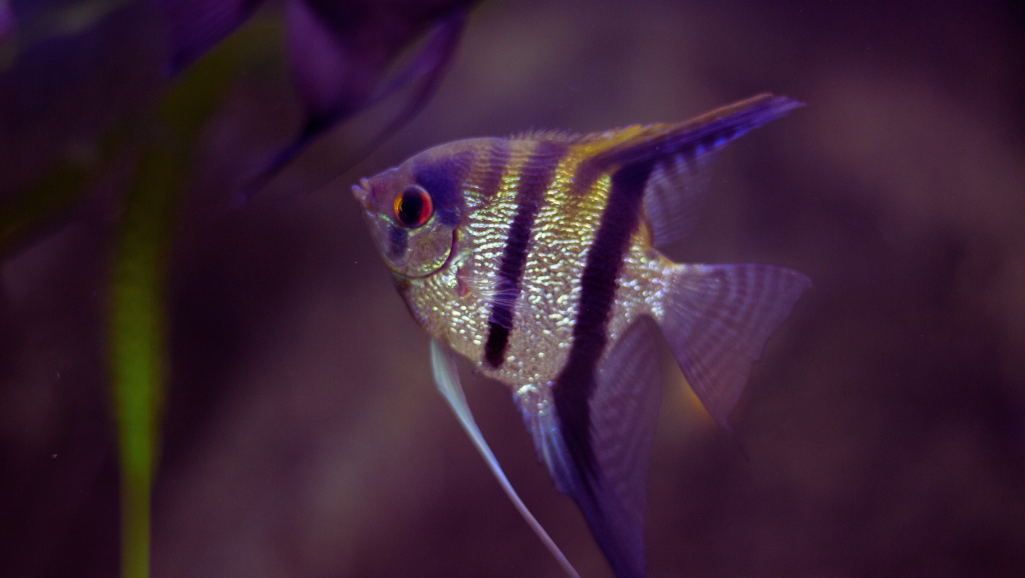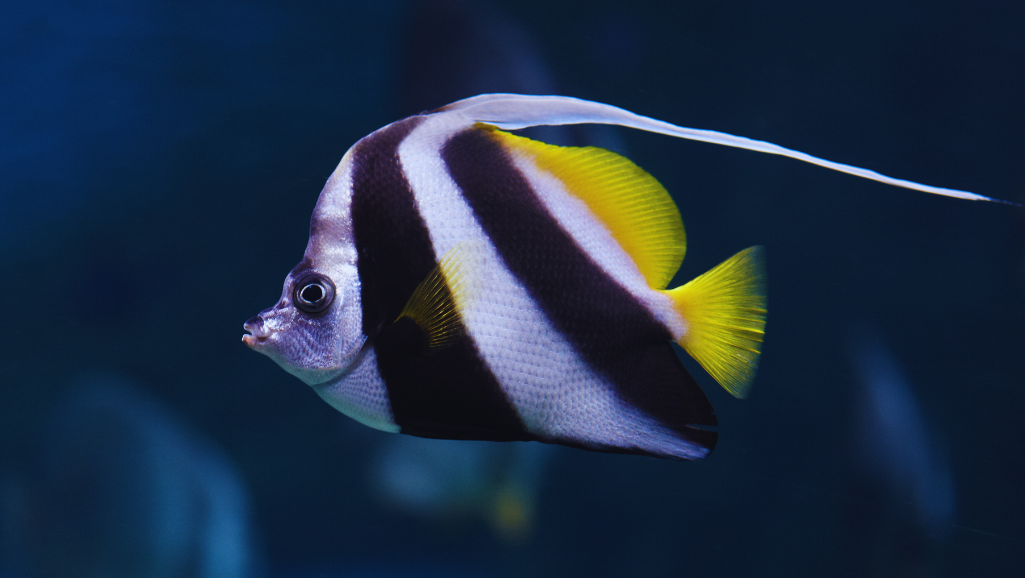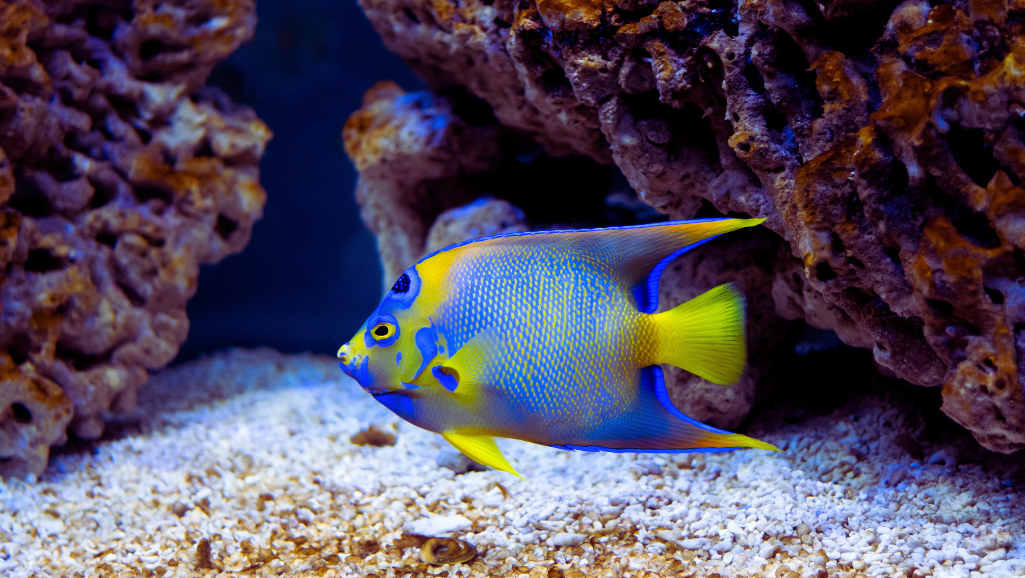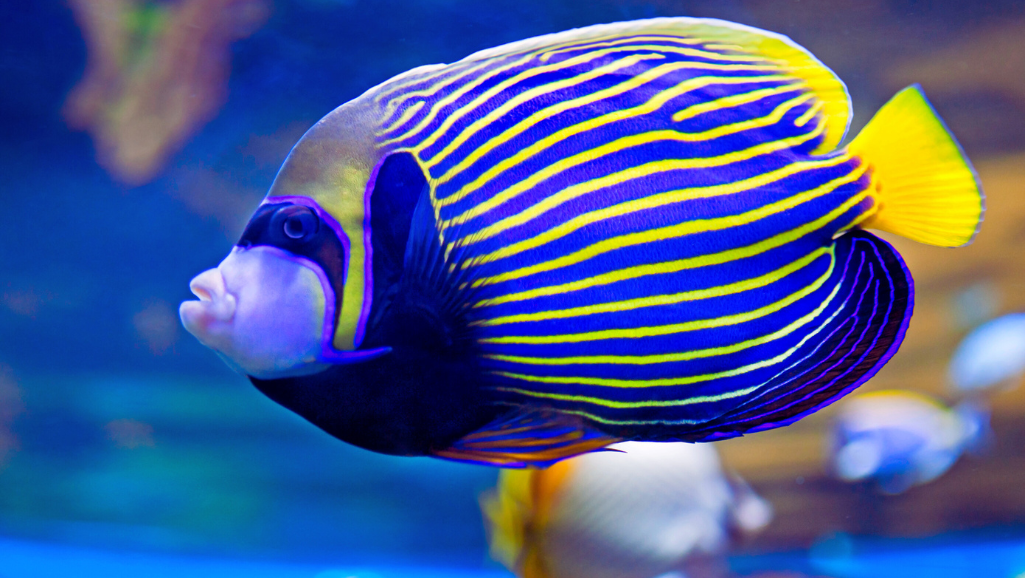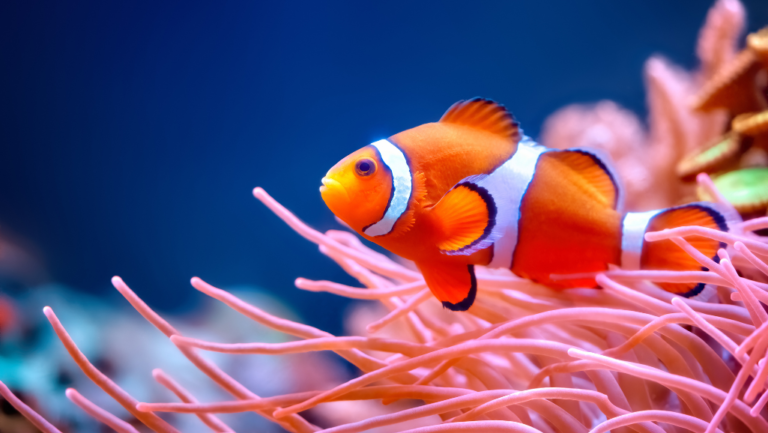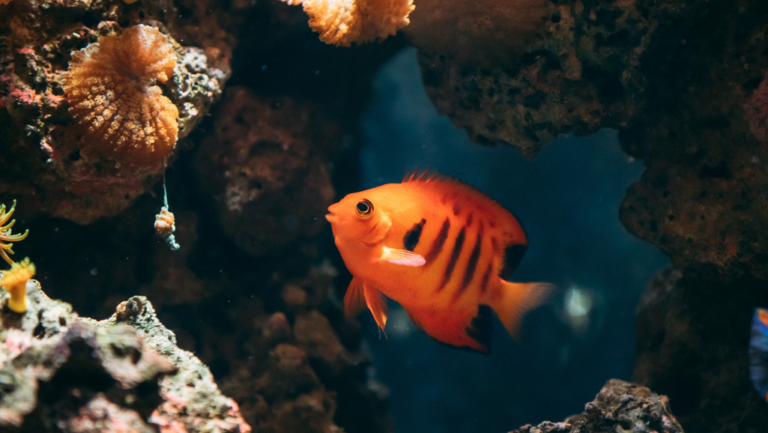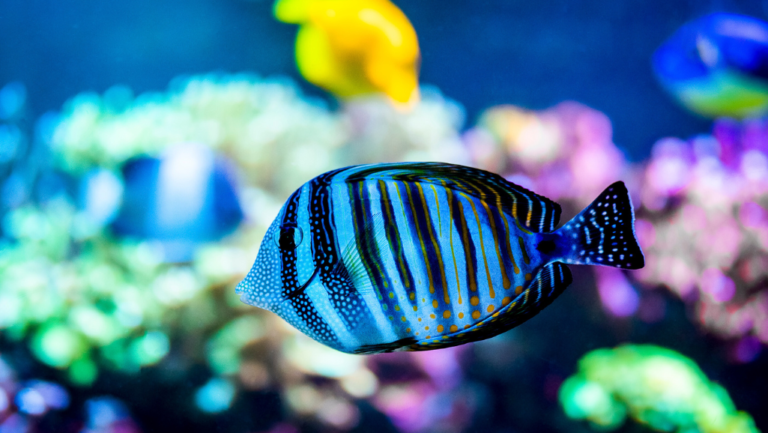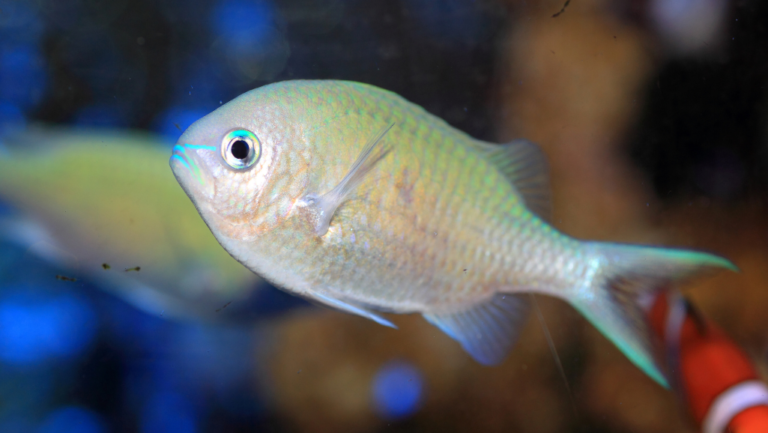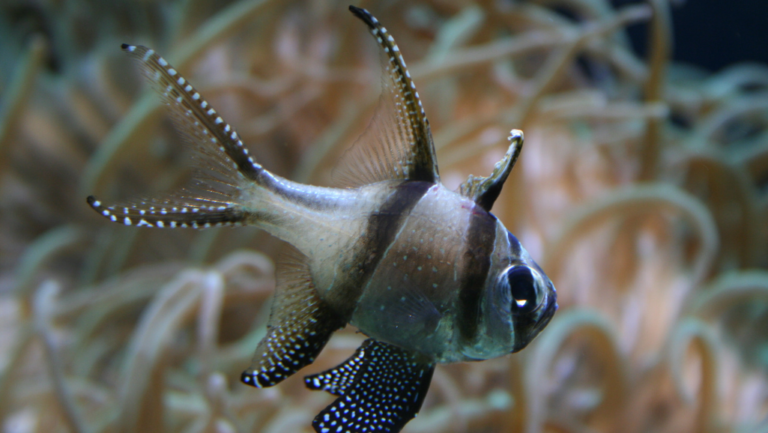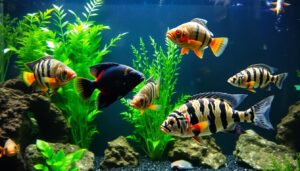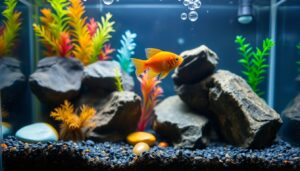Bring bright color and lively personality to your tank with a Coral Beauty Angelfish Care prized for deep purples and vivid orange highlights. This small saltwater fish reaches about four inches (standard length) and thrives in well-structured tanks with plenty of rock and hiding spots—ideal for reef hobbyists and general marine aquarium keepers alike.
Over time, these active grazers cruise live rock, nibble film algae, and display curious behaviors that reward steady care. They do best in an established, mature system—commonly recommended at 70 gallons or more—to support natural grazing and comfortable swimming territory.
This guide shows how to spot a healthy specimen, set up the right tank, and balance algae-based and meaty foods for lasting color and life. For a reputable source and availability, see the LiveAquaria listing linked below to check sizes and stock: LiveAquaria.
Key Takeaways
- Compact saltwater fish with striking purple-to-orange coloration, best kept in larger aquariums.
- Needs plentiful live rock for grazing and hiding to feel secure and exhibit natural behavior.
- Feed a mix of marine algae and meaty foods (spirulina, nori, mysis) to support color and health.
- Can be semi-aggressive—consider reef risks and tankmate choices carefully.
- Quarantine new arrivals and prefer captive-bred specimens when possible for easier acclimation and lower parasite risk.
Meet the Coral Beauty Angelfish: Identification, Origins, and Personality
A compact reef favorite known for bold coloration, the coral beauty angelfish is quick to catch the eye in a well-stocked aquarium. Its accepted scientific name is Centropyge bispinosa (sometimes cited as Centropyge bispinosus in older references); both names point to the same dwarf angelfish species commonly sold as Dusky, Spined, or Twospined in the trade.
Colors and pattern
Coral beauties display a dark blue to purplish body with vivid orange-to-yellow highlights on the face and flanks. Dorsal, caudal, and anal fins often have bright blue margins that contrast with the body — a useful visual ID for hobbyists and reef keepers. Note that diet, region, and captive vs. wild origin can slightly shift hues.
Range and habitat
This marine species is native to the Indo-Pacific, occurring from the Great Barrier Reef through Indonesia and Fiji and into parts of the Indian Ocean. In the wild it favors current-swept, coral-rich reef slopes and rocky crevices where algae growth and hiding spots are plentiful.
Size and temperament
Adults typically reach about 4 inches total length and are active grazers that spend the day cruising rockwork and nibbling microalgae. Because of this moderate adult size, plan stocking and swim space accordingly—a single coral beauty needs room to establish a territory without constant crowding.
Personality-wise, coral beauties are hardy but semi-aggressive: they can be bold around feeding areas and may assert dominance against similarly sized dwarf angelfish. Compared with a flame angelfish, they are roughly similar in temperament but individual behavior varies by tank layout and stocking density.
“Steady cruising, frequent nips at film algae, and quick retreats into caves are signs of a content fish.”
- Identify by the dark body color with blue-edged fins to avoid mix-ups with other dwarf angels.
- Design rockwork with caves and broken sightlines to encourage natural grazing and reduce territorial stress.
- Allow vertical and horizontal space so their 4-inch size and bold behavior don’t trigger persistent conflicts—more room = fewer disputes.
Coral Beauty Angelfish Care: Tank Setup, Diet, and Reef Considerations
Create a stable environment and a varied feeding routine to bring out optimal color and calm behavior.
Tank size & layout
Start with space. Aim for a mature tank of 70 gallons or larger to give this grazer enough territory to explore, forage, and rest without constant stress. In smaller systems aggressive displays become more frequent; larger tanks and abundant structure reduce conflicts.
Build plenty of live rock, caves, ledges, and overhangs so the fish can forage and find hiding places when startled. Arrange rockwork to create broken sightlines—this discourages constant chasing and encourages natural grazing behavior.
Water, filtration & parameters
Keep water stable with strong filtration, steady flow, and surface agitation to maintain oxygen exchange. Use a secure, netted lid during acclimation to prevent jumping. Regular testing and gradual maintenance help avoid rapid swings that stress marine fish and reef invertebrates.
(Recommended parameters should be added after fact-checking — include temperature, salinity/SG, pH, and acceptable nitrate ranges in the final edit.)
Diet & feeding schedule
Coral Beauty Angelfish Care relies heavily on a mixed diet: offer marine algae and vegetable-based items alongside frozen and meaty foods. Good staples include Nori (algae clips), spirulina-enriched flakes or pellets, and occasional mysis or brine shrimp to supply protein.
Feeding routine example: small portions multiple times per day (2–3 short feedings) to mimic natural grazing. Rotate foods to keep interest and support color—try a day of algae-focused feeds, then add a frozen mysis snack a few times per week.
Encourage film algae growth on selected rock faces; it serves as both nutrition and enrichment. When switching diets, phased changes over several days improve acceptance.
Reef compatibility & tankmates
Not fully reef safe—coral beauties may nip at soft corals, LPS, and other sessile invertebrates. Many hobbyists keep them successfully in mixed systems, but monitor for nipping and adjust feeding or placement if corals are harassed.
Avoid housing multiple dwarf angels or similarly sized angelfish in limited space; territorial conflicts are common. Choose peaceful community saltwater fish that occupy different niches and ensure plenty of live rock to break lines of sight.
“Encourage film algae on selected rock faces — it’s both food and enrichment.”
- Quarantine new arrivals to reduce disease risk; avoid copper treatments while fish are in mixed or reef systems—copper near or above 0.15 ppm is harmful to many reef organisms and sensitive dwarf angelfish.
- Prefer captive-bred coral beauty specimens when possible; they typically adapt to prepared foods faster and show improved parasite resistance compared with wild-caught individuals.
- Plan a quick checklist: tank size (70+ gallons), ample live rock, stable water, varied foods (algae + meaty), and quarantine step before adding to the main display.
Pro Tips and Pitfalls: Set Your Coral Beauty Up for a Long, Healthy Life
Set the stage by balancing varied foods and smart aquascaping so your fish spend energy grazing, not harassing corals.
- Tip 1 — Diet: rotate and replicate grazing.Keep your coral beauty fed on a mix of algae-based staples and small meaty items to reduce coral nipping. Offer Nori on clips, rotate spirulina-rich flakes or pellets, and add mysis or brine shrimp a few times weekly. A sample feeding schedule: small portions 2–3 times per day, with one frozen mysis/brine shrimp session 2–3× weekly to supply protein.
- Tip 2 — Rockwork & hiding places.Design aquascapes with plenty of live rock, caves, and broken sightlines. These features give the angelfish hiding spots and distinct territories so they spend more time grazing and less time chasing tankmates. Aim for abundant structure rather than open, barren layouts.
- Tip 3 — Tankmates & when not to combine.Mixing multiple dwarf angelfish (including flame angels) frequently triggers territorial fights in limited space. For most reef tank hobbyists, one centerpiece angelfish is the calmer choice. Pair coral beauties with peaceful saltwater fish that occupy different niches (e.g., midwater swimmers, cleaners).
Troubleshooting: If you see nipping
- Increase veggie-based feedings and add an algae clip for 1–2 weeks to test effectiveness.
- Rearrange rockwork to create new sightlines and additional refuges.
- If nipping continues, consider moving the angelfish to a fish-only tank or replacing sensitive corals with hardier species.
- Keep a simple log of foods offered, timing, and coral responses — tracking changes over time makes it easier to spot what reduces nipping.
- Watch behavior closely during the first days and weeks; chasing, prolonged harassment, or frayed fins are signs you need to change layout or stocking.
- Stable routines, varied foods, and strong rockwork are the easiest ways to enjoy bright color and calm behavior.
Conclusion
Create the right home and habits, and this colorful saltwater fish will reward you with lively behavior and lasting health.
Prioritize a mature, 70+ gallon tank with abundant live rock, good flow, reliable filtration, and a secure lid. Feed a balanced diet that blends algae-based items (nori, spirulina) with select meaty foods (mysis or brine shrimp) and quality flake or pellet staples to keep color and energy steady.
Watch compatibility in your reef tank: coral beauty angelfish may nip at soft corals, LPS, and other sessile invertebrates. Avoid stacking dwarf angels unless your system is large and well structured. Quarantine new arrivals before adding them to the main display and avoid copper treatments in reef systems (copper levels near or above 0.15 ppm can harm sensitive species).
Opt for captive-bred specimens when possible — they typically adapt to prepared foods faster and show better parasite resistance than wild-caught fish. With steady care, appropriate space planning as they reach roughly 4 inches, and consistent daily habits, your aquarium can be a vibrant, long-lived display. Learn more from the linked care guide: care guide.
